Herlinde Koelbl photographed her first military training target – "a shot-up metal figure standing in the furrows of a field" – in 1984. Although she didn't publish the image, it lingered in her head as "a symbol of violence and death" for almost 25 years, until she began working on her series Targets in 2008. "There were so many questions in my mind," she says. "But what I really became interested in was the face of the enemy. What does he look like? Could the targets tell me anything?"
Six years on, Koelbl is showing Targets at the German Historical Museum in Berlin, following the publication of a book of the same name (her decision to include an essay entitled Making Peace, by Sinn Féin leader Gerry Adams, may rankle with some readers). Koelbl, who was born in Bavaria just a month after the outbreak of the second world war, photographed military training targets across Europe and the US as well as the Middle East, Africa, China, Russia, Turkey and Israel.
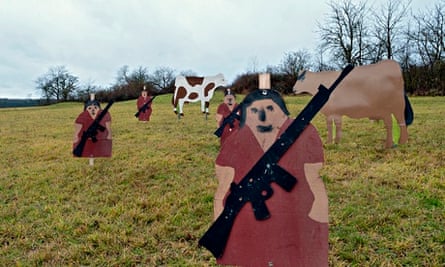
"Only North Korea said no," she says. "Everywhere else, I was given access: sometimes on my own or with a single officer; sometimes accompanied by several people. I think, a lot of the time, they saw me as an eccentric woman. It's a very macho world and all they are interested in is the guns, the hardware. No one apart from me was interested in the targets. They seemed a bit baffled that I wanted to photograph them."
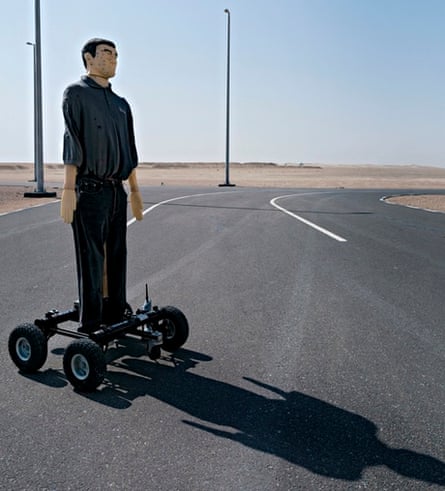
The targets tell a fascinating story, not just about the training of young recruits around the world to shoot to kill, but about the changing face of warfare – what Koelbl calls "the increasingly technological global industry of war". In Israel, she photographed targets as she walked through a copy of a Palestinian town, complete with a Bank of Palestine, a city hall and an old people's home. In Fort Irwin, California, she encountered a vast Middle Eastern-style city designed by Hollywood prop-builders, complete with golden-domed mosques, carpet shops and stores that sold plastic meat, fruit and vegetables.
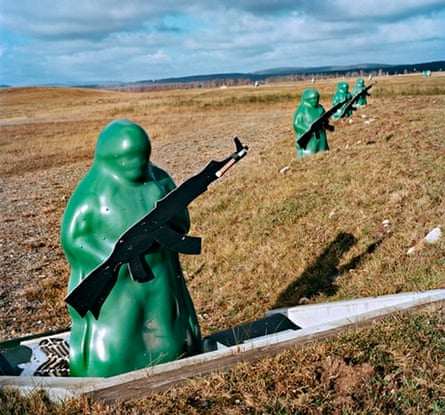
As the nature of warfare has changed, so too has the face of the enemy. Recalling his own training, a US soldier who accompanied Koelbl to a shooting range told her: "My target was the green figure of Ivan with a red star on his helmet." As the cold war recedes into history, Ivan has metamorphosed into another archetype: a dark-skinned Arabic figure in oriental-looking clothes. "The enemy may change appearance," says Koelbl, "but every soldier believes he is fighting for the right side, and they are trained to kill anyone who is not. That mentality begins with target practice."

Koelbl is a distinguished documentary photographer in Germany. Her previous projects include 1989's epic Jewish Portraits, which focused on famous Jewish intellectuals from German backgrounds who escaped the Holocaust; and 1999's Traces of Power, in which she shot a single photograph of a group of German politicians every year from 1991 to 1998. For this new series, she travelled far and wide, photographing primitive targets – pieces of fabric, cardboard, paper – made by semi-legal armies in northern Iraq, Kurdistan and Western Sahara, as well as remote-controlled figures on wheels in the United Arab Emirates. In both Britain and Germany, she says, the targets often seemed old-fashioned. "They were basic figures that looked as if they had not changed much since the second world war."
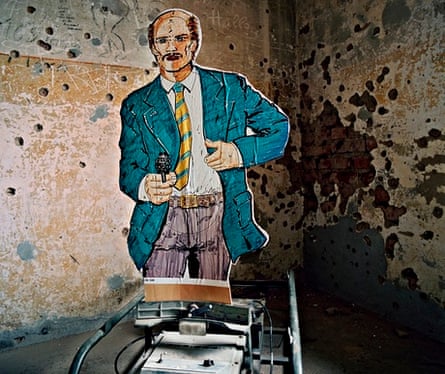
Elsewhere, she found the future was already here. "I had to change the formal nature of my project," she says, "when I went to a huge international training camp in Germany, where there were no targets. Instead, soldiers shoot at their comrades with lasers and every hit is registered instantly on electronic circuits in their uniforms." She was accompanied by a soldier who was hit three times on his first day of training. "He said it made him feel really irritated and then emotional. He even started thinking, 'What will my battalion do without me? How will my family survive?' It was like the real thing."

From her travels, she thinks Israel has "the best army in terms of fitness and training, but South Korea has the most hi-tech weaponry". Has the experience changed what she thinks of the military and modern warfare? "Well, I certainly know a lot more about it. The goal of training is to make soldiers more like effective machines. In the first world war, soldiers were on target only about 30% of the time. By the Vietnam war, the hit rate had risen to 80%. Now you also have asymmetric warfare and drone attacks. You realise that war is an even more lethal business today and that the war industry is here to stay."

During the project, she says, she had recurring dreams about "power, aggression and death", but she has since become more thoughtful about "the reality of what it is to be a soldier in a world where war is always going on". For all that, her images have a detached, formal power that is only heightened by her decision to include some portraits of the soldiers she moved among and talked to, but without any information about their nationality or rank. "In battle," one soldier told her chillingly, "there's only one feeling: euphoria – nature's reward for coming so close to death."
For the Berlin exhibition, Koelbl placed a large photograph of a training field full of human-looking targets adjacent to one of a military graveyard. "It struck me that the training field looked like a strange cemetery with row after row of symbolic figures," she says. "The two images seemed to fit together – given that all those lying under the ground had been targets."
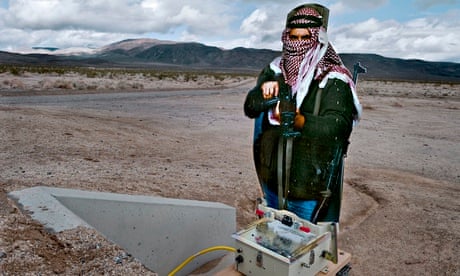
Comments (…)
Sign in or create your Guardian account to join the discussion